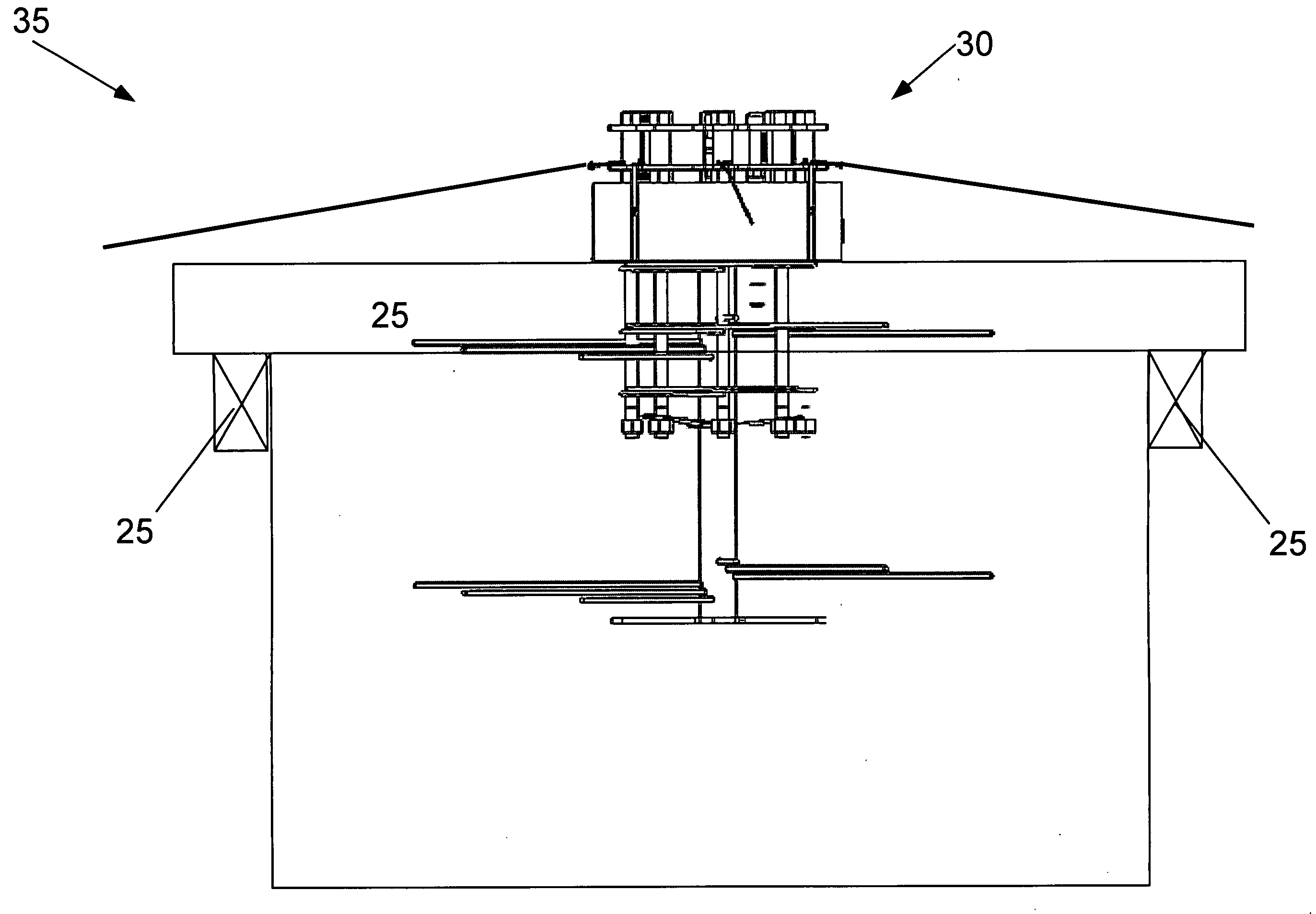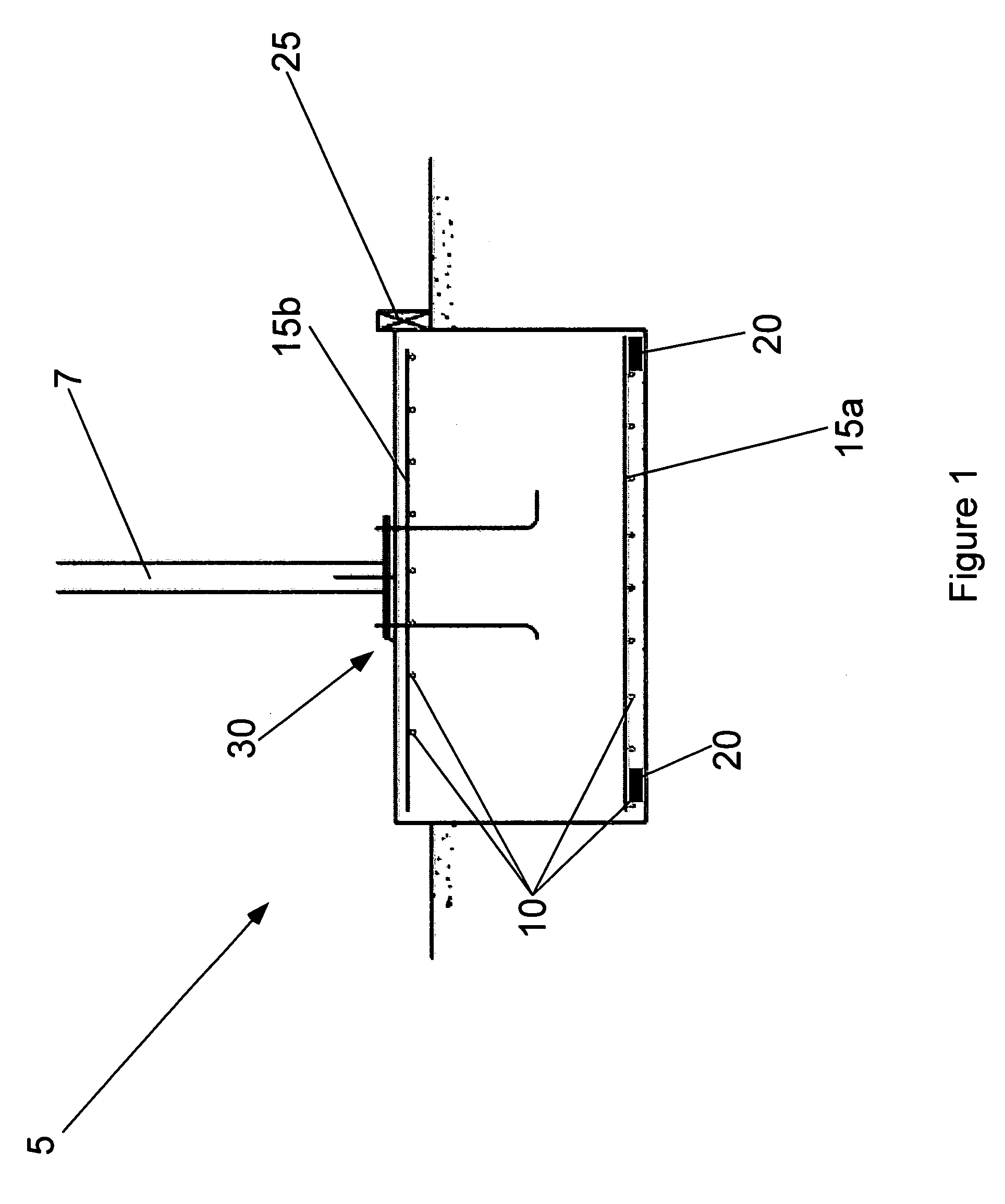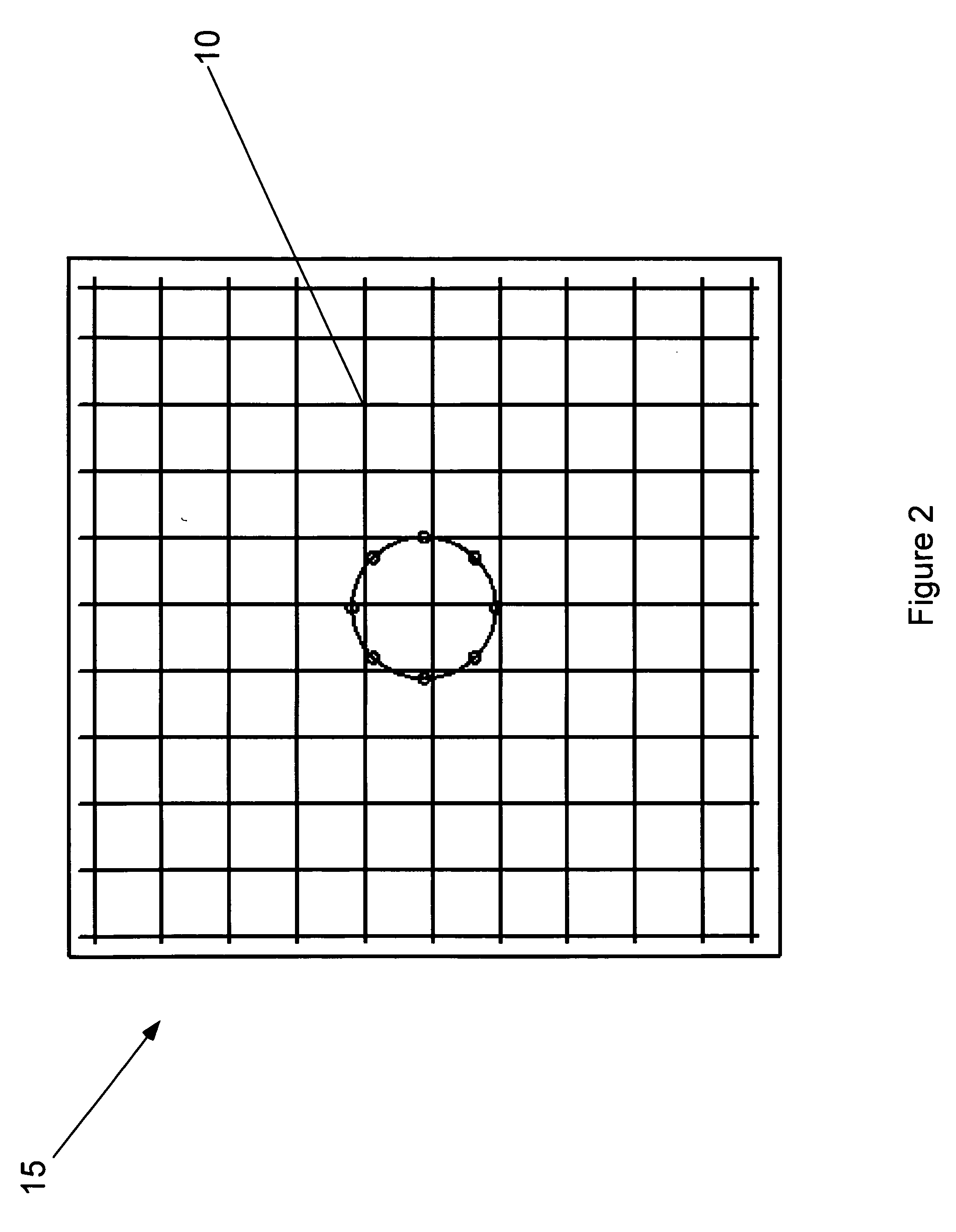Foundation for monopole wind turbine tower
a technology of wind turbine tower and foundation, which is applied in the direction of foundation engineering, wind energy generation, mechanical equipment, etc., can solve the problems of inefficient shape, more expensive than maned towers, and installation costs of wind turbines, so as to reduce material costs and construction labor, enhance the use of plain structural concrete, and reduce concrete cracking
- Summary
- Abstract
- Description
- Claims
- Application Information
AI Technical Summary
Benefits of technology
Problems solved by technology
Method used
Image
Examples
Embodiment Construction
[0020]The inventions disclosed herein entail improvements to wind turbine foundation design.
[0021]A prior art mat foundation 5, is shown in FIG. 1. The cross-section, as shown in FIG. 2, is that of a square. A tower 7 is attached to the foundation 5. The foundation width and depth are determined by engineering analyses, taking into consideration the applied loads (overturning moment, side shear and axial force), soil conditions, frost depth, anchor bolt configuration and other factors. Steel reinforcing bars 10 are placed orthogonally a certain distance apart so as to create a reinforcing grid 15a and 15b in both horizontal directions. Detail of the reinforcing bars 10 and the reinforcing grid 15a and 15b are shown in FIG. 2. The bars 10 are fastened together at their intersections using wire ties, as is typical of structurally reinforced concrete. One of the most tedious tasks in constructing the mat foundation 5 is tying the reinforcing bars 10 at their intersections. In a typical...
PUM
 Login to View More
Login to View More Abstract
Description
Claims
Application Information
 Login to View More
Login to View More - R&D
- Intellectual Property
- Life Sciences
- Materials
- Tech Scout
- Unparalleled Data Quality
- Higher Quality Content
- 60% Fewer Hallucinations
Browse by: Latest US Patents, China's latest patents, Technical Efficacy Thesaurus, Application Domain, Technology Topic, Popular Technical Reports.
© 2025 PatSnap. All rights reserved.Legal|Privacy policy|Modern Slavery Act Transparency Statement|Sitemap|About US| Contact US: help@patsnap.com



